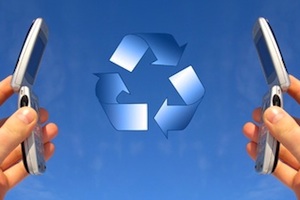Last updated April 12, 2019
 After much negotiation and wringing of hands, Members of the European Parliament have finally reached a deal to try to assist with the growing electronic waste crisis on the Continent. The WEEE (Waste from Electrical and Electronic Equipment) Directive, which was finally given approval on the 19th of January, means that countries in the European Union will be obliged to collect up to 85 percent of old cell phones, junked refrigerators, computers and other electronic devices by 2019 for the purposes of being recycled. The new directive replaces the current system that is based on weight.
After much negotiation and wringing of hands, Members of the European Parliament have finally reached a deal to try to assist with the growing electronic waste crisis on the Continent. The WEEE (Waste from Electrical and Electronic Equipment) Directive, which was finally given approval on the 19th of January, means that countries in the European Union will be obliged to collect up to 85 percent of old cell phones, junked refrigerators, computers and other electronic devices by 2019 for the purposes of being recycled. The new directive replaces the current system that is based on weight.
However, while the 85 percent level is the ultimate goal, the legislation has imposed a recovery target of 45 percent of new electronic sales for 2016 and of 65 percent by 2019 in order to allow new members of the European Union to have additional time in which to comply. One advantage of the new directive is that it is intended to replace as many as 27 different standards that are currently employed across the European Union, while it is also intended to slash the exporting of electronic waste.
Not everyone is happy with the new directive however, with environmental groups bemoaning the fact that it still does not go far enough. “Collection targets have been delayed and the introduction of economic instruments for greener design, reuse targets and ambitious recycling targets have been left to a future revision, which is a bitter blow,” says the senior policy officer of the Europe Environmental Bureau, Stephane Arditi.